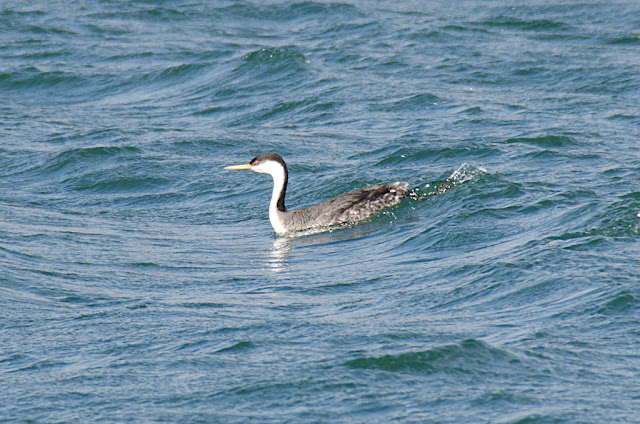This last weekend, I had the fabulous opportunity to go to the 2013 Ontario Field Ornithologists annual convention, which was held at Point Pelee National Park. I was very excited, and I signed up for many interesting workshops.
On Saturday morning, I partook in the young birders outing around the Tip. Unfortunately, we only managed to find a couple warbler species, most likely because all of them are hiding from the dozens of dangerous Sharp-shinned Hawks circling above. However, we did find many interesting bugs, such as several Monarchs, Viceroy butterflies, and plenty of cool dragonflies.
 |
| Turbulent Phosphila |
 |
| Believed to be Hypercompe scribonia, which turns into the Giant Leopard Moth. |
Later that day, I went for my second workshop; canoeing on the marsh. We were hoping for some shorebirds out on the mudflats. On the way there, we observed some gorgeous white lilies, lily pad roots, and something that looked like an underwater pineapple attached to a lily pad.
Finally, getting to the flats, we see lots of birds: Green-winged Teal, Ruddy Duck, cranes, herons, plovers, and sandpipers. Along with them, we see thousands of gulls and cormorants all around the marsh. I managed to get very close to one Pectoral Sandpiper, being at the front of the canoe. My camera lens must have been two inches from the bird. I snapped photo after photo, and the little guy didn't even look frightened! The same Pectoral Sandpiper will never be forgotten, and is presently pictured behind my blog title.
One peep remained unidentified, sitting silently in a tiny corner of the marsh - but it wasn't so tiny. Having Least Sandpipers for comparison, this bird was two or three times larger. All the participants looked on trying to pin a name to the bird. What could it be? It would not stand up to show its legs, so we had immense difficulty identifying it. Finally, one canoeist said what all of us had been too embarrassed to suggest: "Red Knot?" As soon as I got access to my field guide, I searched frantically under the species Red Knot. Apparently, southern Ontario only had several autumn records every year. But as soon as I turned to the right page, I knew that it had to be a Red Knot - nothing else matched. Lifer!
 |
| My first Red Knot! |
The banquet Saturday evening was magnificent. The hall buzzed with
excitement as we all waited for Greg Miller to present his keynote
speech. If you're aren't familiar with his name, the main character from
the story "The Big Year" was based on him! He was also a consultant for
the movie in its making - that meant that he had a chance to meet the
famous actors starring in "The Big Year". His speech was very
inspirational, and I can't believe that he shook my hand!
Anyway,
the following morning, I woke up late for birding: my clock read
7:30am. I was supposed to be at the Tip with the Young Birders group
right now! I threw on the first clothes I could find, inhaled my
breakfast, and rushed off to to Point Pelee. Luckily, I was able to
catch up to the group that was intently looking at something from the
beach. As soon as they saw me, they waved me over enthusiastically. I
knew they must be looking at a good bird, so I ran over there as fast as
I could.
Approaching the group, the leader invited me
to peek through his spotting scope. As I brought my eye nearer and
nearer to the lens, I could not contain myself and I let out a yip of
joy... catching sight of the Brown Pelican everyone was looking at sitting on the Tip! Apparently, this was the same individual that spent the entire summer in Cleveland, and recently visited the nearby Wheatly Harbour.
 |
| Brown Pelican - noted white cheek patch |
I was overjoyed observing this unusual species to Ontario - unfortunately, I did not bring my camera, so the only documentation I have of it is a quick, on-spot sketch.
I spent an hour at the Tip until I had to leave for my next workshop: drawing birds in the field with Peter Burke. It was probably my favourite workshop of the weekend. We started off by examining a freshly dead Cooper's Hawk and talking about the importance of understanding bird anatomy in sketching. Then, we went out to the nearby harbour to try our own drawings with this newly-gained knowledge. It was a lot of fun, and I know now how vital it is to draw from observation to enhance not only drawing skills, but also bird identification skills.
This was an unbelievably amazing trip! I can guarantee that if you come next year, you'll have plenty of stories to tell, just like me. I will see you all at the 2014 convention, which will take place in Ottawa!
 |
| Great Blue Heron |

























